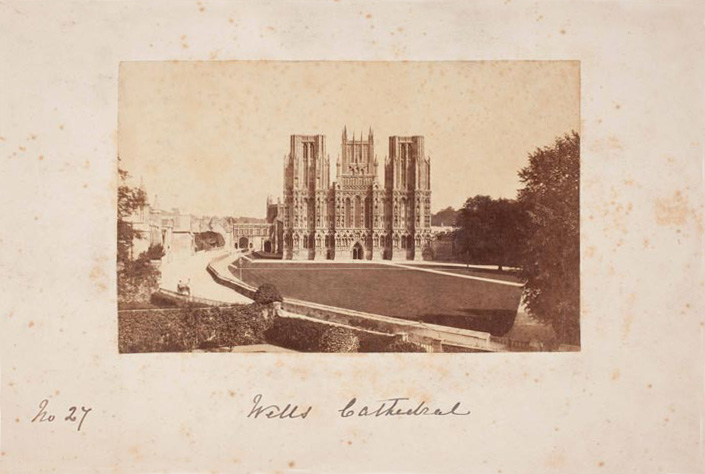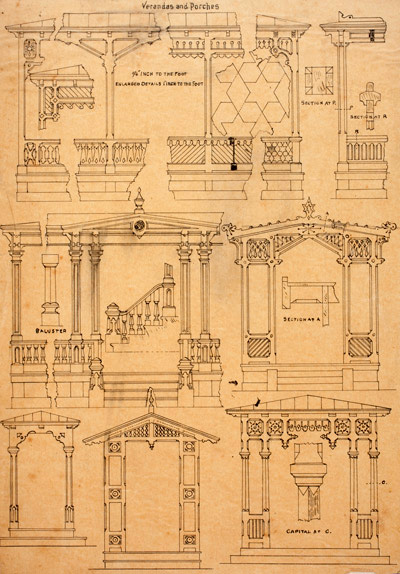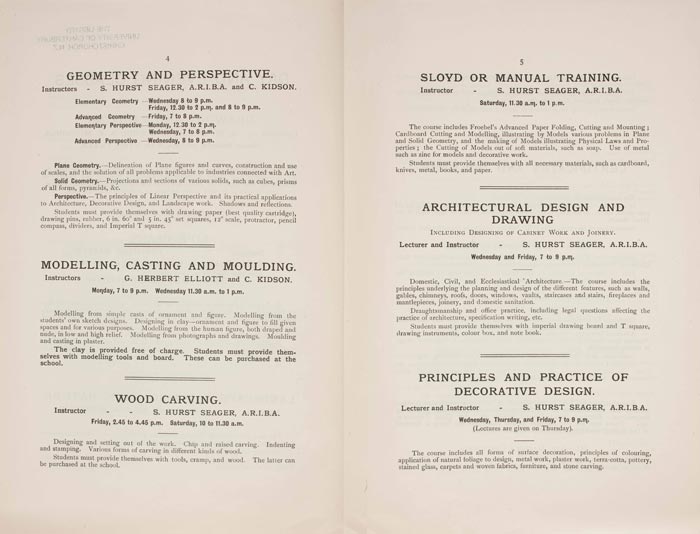Prior to the establishment of architectural courses of study and degrees, the usual method for architects to learn their craft was to become an articled pupil at an established firm, in a position that was much like an apprenticeship. They would generally receive four years of training on the job in order to be able to call themselves an architect, during which time they might be instructed in design and drawing methods, as well as possibly learning engineering and surveying skills, depending on the nature of the firm they learnt with.

Learning by Design

Wells Cathedral, England. This print, marked No. 27, comes from a series kept by the Armson Collins firm, to which staff could refer for inspiration and guidance.
Although architecture was increasingly seen as a specialized profession in the 19th Century, the methods of acquiring an articled position must have varied. John James Collins for example was taken on as an articled pupil by William Armson in 1871. At the time Collins was just 16 years old. When he came and asked for a position, Armson gave him two books to read and left him alone for a while. One volume was on Red Indians, and the other was about architecture. When Armson returned, he found young Collins reading the book on architecture, and so agreed to hire him.
In addition to learning on the job, architects could expand their knowledge of design through research, or travel and work overseas. For that reason many New Zealand based architects would make journeys through England or Europe to ensure they developed a good knowledge of architectural styles, and kept up with current trends. Firms would also develop extensive libraries of reference material, as is aptly demonstrated by the prints and cuttings in the Armson Collins Collection. The firm obviously agreed with Samuel Hurst Seager when he wrote in Architectural Education that “We are all students, or we should be, for the complexity of problems embraced within the term architecture can never be fully solved even by the most studious – the most experienced."
The professionalization of architecture eventually led to the creation of specialized courses of study, which were necessary to cover the increasing skill set that an architect might require. Papers in technical drawing and architecture were available at Canterbury College from a relatively early stage. The newly established Canterbury College School of Art advertised its 1882 syllabus as including courses in design, machine construction and drawing, and building construction and drawing.

An original drawing of Verandas and Porches from the Armson Collins archives, possibly created by an articled pupil.
Of the 63 evening students enrolled in that year, 28 came from the building trades. Architectural courses continued to be offered at the College for many years, and were eventually taught by Samuel Hurst Seager when he joined the staff as a lecturer in Architecture and Decorative Design in 1893.
Students were expected to learn more than just drawing skills. By 1915, Samuel Hurst Seager claimed that a good architect should, in addition to acquiring design skills, also have studied: geology, inorganic chemistry, sound engineering, heat engineering, hydrostatics, mechanical engineering, graphics, statistics, and have a general knowledge of arts and crafts such as wood carving and masonry. With such high expectations, it was unfortunate for local students that in 1914 when Canterbury College considered creating a School of Architecture that lack of funds prevented its establishment. It fell instead to the University of Auckland to establish a national architectural school in 1919 and future prospective architects had to travel further afield to gain a degree.

Canterbury College School of Art Prospectus showing the architectural design and drawing course taught by Samuel Hurst Seager, 1897.